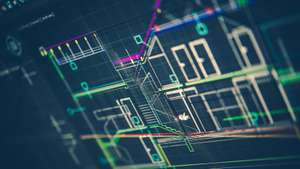
Some aspects of setting up the technical regulation system in the design and construction industry in the transition to a design parametric approach.
 Dmytro Isaenko1 Candidate of Public Administration Science, VP.
Dmytro Isaenko1 Candidate of Public Administration Science, VP. Vitalii Ploskyi2 Doctor of Science, Professor.
Vitalii Ploskyi2 Doctor of Science, Professor. Volodymyr Skochko 2* Ph. D., Associate Professor.
Volodymyr Skochko 2* Ph. D., Associate Professor.
1 Confederation of Builders of Ukraine, Kyiv, Ukraine;
2 Kyiv National University of Construction and Architecture, Povitroflotsky Avenue 31, Kyiv, 03037, Ukraine.
Received: 02/24/2019, Accepted: 03/30/2019, Available online: 04/29/2019.
DOI: https://doi.org/10.32557/useful-3-1-2019-0002
HDL: https://hdl.handle.net/20.500.12334/97
*Corresponding author e-mail: vladimir.and.friends@gmail.com
Under a creative commons license. Volume 3, Issue 1, 2019, pages: 06-15.
Plagiarism was checked by iTenticate
Author Keywords: technical regulation parameters, elimination of conflicts, design and construction industry.
Abstarct
The paper proposes an approach to the identification and elimination of conflicts of technical regulation parameters contained in the normative and technical documentation of the design and construction industry. The approach is based on comparing the complexity of the methods of defining the same parameters of technical regulation in various normative documents, followed by an analysis of the validity of only one of the studied methods. It is proposed to apply a quantitative and qualitative analysis of the associated parameters of technical regulation, which are involved in various investigated techniques and regulatory documents, in order to identify the depth of integration of one or another of them in the actual practice of design and construction work. If one or more of the techniques under consideration are less substantiated from a scientific, qualitative and/or quantitative point of view, then it (they) is (are) subject to withdrawal from the relevant normative documents with the provision of appropriate recommendations and references to that normative document, which is accepted as the main one for determining the investigated parameter of technical regulation. After removing unnecessary parameters (duplicated to optimization), all editable regulatory documents should be subjected to expert advice to supplement and provide guidance on the use of other existing normative documents related to the data when determining the specific parameter of technical regulation. In addition, expert opinion will help to avoid possible shortcomings in the narrative of normative documentation, as well as prevent the loss of some important part of descriptive information and simplified approaches to an approximate assessment of the investigated parameters of technical regulation, which can be used for integrated assessment calculations, the execution of project documentation at the stage of sketch design and pre-design works.
1. Introduction.
One of the most acute problems in the field of technical regulation in domestic construction and architecture is a significant number of conflicts in the terminology apparatus, guidelines and principles for determining the parameters of regulation. Such a problem leads to the need to create additional regulations and other documents aimed at clarifying the order of action in case of occurrence of the corresponding conflicts, which complicates the process of using the technical normative documentation as a whole. At the same time, the contradictory nature of additional explanations creates more obstacles and problems than benefits. The solution of this problem is fundamental and extremely relevant in today's conditions, when the technical regulation system is in dire need of a transition from the prescriptive method of forming normative constraints [1] to the parametric method for determining the parameters under investigation, which is based on the use of some target functional assignment of the corresponding parameters, and is more flexible having a scientific, technical and scientific background [2]. However, for the transition from the assignment to the parametric method of designing, it is necessary to eliminate a whole series of conflicts that arise when defining the same parameters of technical regulation in different normative documents as well as to clearly reject all related technical regulation parameters used in the determination of one - investigated - in order to determine their hierarchy in the system of interconnected normative documents and related acts, explanations, instructions and additions.
Conclusions
Consequently, we can conclude that the proposed approach can allow a significant reduction of labor costs for the analysis of conflicts of technical regulation parameters, repeated in various normative documents, and remove from the latter the least appropriate approaches and methods for determining the appropriate parameters. In addition, the presented approach makes it possible to systematize and define a hierarchy in the set of all parameters of technical regulation used in the process of determining the value of the investigated parameter.
References
[1] On Technical Regulations and Conformity Assessment [Text]: The Law of Ukraine dated January 15, 2015№ 124-VIII // Information from the Verkhovna Rada of Ukraine. – 2015. – № 14. – pp. 96.
[2] Isaenko D.V. Legislative regulation of activities in the construction industry. The peculiarities of world ex-perience and European approach for determining priorities in the formation of a living environment / D.V. Isaenko // Construction Production. – 2017. – № 63/2/2017. – pp. 11-15.
[3] Nepomniashchyi O.M. Regulation of permitting and approval procedures in construction in accordance with world standards / О.М. Nepomniashchyi, D.V. Isaenko // Public administration. 2016 – No. 1 (2). pp. 49-60.
[4] Technical regulation in construction. An Analytical Review of World Experience [Text]: Snip Innovative Technologies: Serykh A. – Chicago: SNIP. 2010 pp. 889.
[5] Regulation (EU) No 305/2011 of the European Parliament and of the Council of 9 March 2011 laying down harmonised conditions for the marketing of construction products and repealing Council Directive 89/106/EEC Text with EEA relevance.
[6] V. Skochko, “Determination of support reactions of rod constructions obtained by morphogenesis.” USEFUL online journal, vol. 2, no. 3, pp. 29–42, Oct. 2018. DOI: https://doi.org/10.32557/useful-2-3-2018-0005.
[7] V. Skochko, V. Ploskyi “Morphogenesis and adjustment of flat rod structures.” USEFUL online journal, vol. 2, no. 2, pp. 08–26, June 2018. DOI: https://doi.org/10.32557/useful-2-2-2018-0002.
[8] DBN V.2.6-31: 2016 "Thermal insulation of buildings". Ministry of Regional Development, Construction and Housing and Communal Services of Ukraine. Kyiv, 2016, pp. 30.
[9] Fokin K.F. Construction heat engineering of fencing parts of buildings. 3rd edition reworked and add/ K.F. Fokin. – Moscow: Stroyizdat, 1973. pp. 287
Please cite as: D.Isaenko, V.Ploskyi, V.Skochko “Some aspects of setting up the technical regulation system in the design and construction industry in the transition to a design parametric approach.” USEFUL online journal, vol. 3, no. 1, pp. 06–15, April 2019. DOI: https://doi.org/10.32557/useful-3-1-2019-0002








Comments